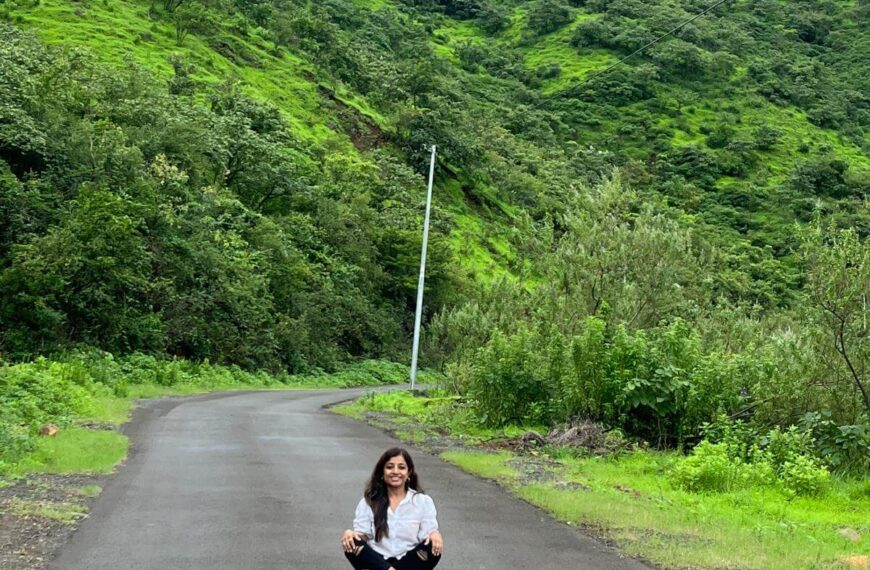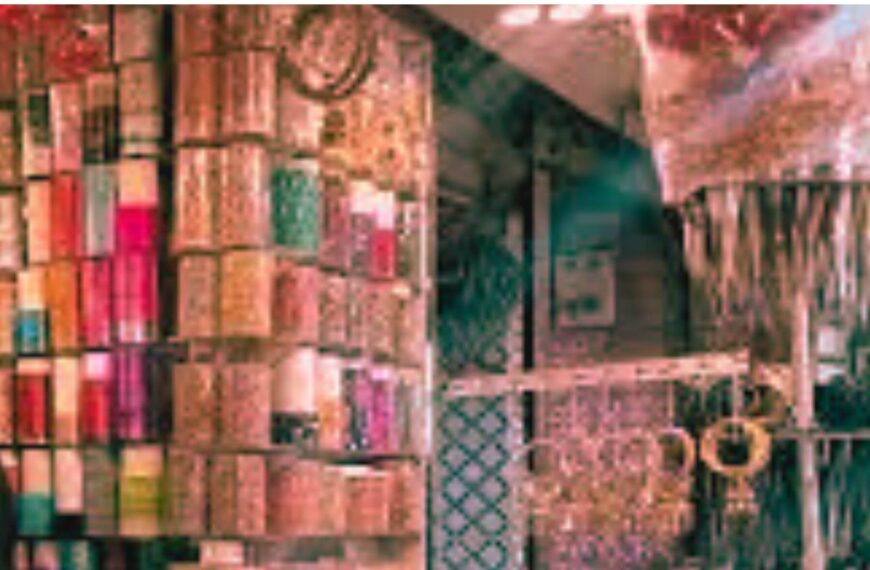The fragrance of kebabs wafts out of the very mention of Lucknow and the cultural bonanza it offers is the stuff dreams are made of. The city is synonymous with Nazakat and Nafasat. The name may well have been associated with Lakshmana, Lord Rama’s brother, according to some beliefs. Lucknow was ruled by the Delhi Sultanate, shifted to the Mughals and later the Nawabs took over. The British Raj made Awadh a buffer state. The Treaty of 1801 gave it a semblance of autonomy. Wajid Ali Shah was the namesake ruler. In 1856, the English were impatient. They took over Awadh on a sheer pretext. Lucknow was the epicenter of the Mutiny, in 1857. The 14-year- old son of Begam Hazrat Mahal was crowned the ruler. It took till August 1947, when India became independent, Lucknow was under their rule. Lily recapitulates her stay in this city, as an Army wife. She tells us about the people, Chikankari and Zardozi, its food and ambiance, in the weekly column, exclusively for Different Truths.
When the rumblings of the next posting starting resounding in our ears, we were startled out of our wits. It was a third consecutive posting in Uttar Pradesh. A rare occurrence, if you ask me. The bonanza being the fact that it was the capital city of Lucknow. The fragrance of kebabs wafts out of the very mention of its name and the cultural bonanza it offers is the stuff dreams are made of. Well, definitely my dreams. The city is synonymous with Nazakat and Nafasat. The name may well have been associated with Lakshmana, Lord Rama’s brother, according to some beliefs. The Dalits feel that it could be named after Lakhan Pasi. Lucknow was ruled by the Delhi Sultanate, shifted to the Mughals and later the Nawabs took over.
The British Raj made Awadh a buffer state. The Treaty of 1801 gave it a semblance of autonomy. Wajid Ali Shah was the namesake ruler. In 1856, the English were impatient. They took over Awadh on a silly pretext. Lucknow was the epicentre of the Mutiny, in 1857. The 14-year- old son of Begam Hazrat Mahal was crowned the ruler. It took the British 18 months to recapture Lucknow. From then on, till August 1947, when India became independent, Lucknow was under their rule.
The tinkle of the courtesans’ ghunghrus (anklet bells) and the mellifluous voices of ghazal and thumri singers reverberates in the narrow gullies and kuchaas (by-lanes and alleys) of the old walled city. The Chowk area drew me like a magnet, as I roamed in the by-lanes hungrily absorbing the sights and sounds that took me back to another era. The language had a refined cadence. It was Urdu that dripped with elegant courtly words. I went hunting for chikankari embroidery that dates back hundreds of years, more than 400 years in Lucknow. It originated in the Moghul courts in the 16th -17th century. With the degeneration of the Moghul courts, craftsmen came to Lucknow. The earliest reference is found in 3 rd century BC, when the Greek traveller, Megasthenes, records its presence in the courts of Chandragupta Maurya.
Chikankari has myriad delicate stitches, ten different kinds to be precise, which are traditionally embroidered with white cotton thread on thin white cotton or muslin fabric to suit the hot weather. The distinct flavours were of shadow work and Murri stitch. It has evolved now to suit modern tastes but nothing beats the age old workmanship and kaarigari (workmanship). In my search inside the old Darwaazas and gateways, I stumbled upon wooden frames in each little house where small boys sat around silk or crepe fabric stretched across the frame. They were busy doing fine Zardozi embroidery. It was just like it must have been during the time of the Nawaabs. The golden zari thread creates magic on the cloth, fit for any queen anywhere in the world. Lots of historical films in Hollywood still look towards Lucknow embroidery for their extravaganzas. It pained me to see old ladies and young children in sheer penury, despite the hard work they put in to do the fine chikan embroidery and the intricate back breaking Zardozi, while the fancy designers sold the same at phenomenal prices and earned lakhs. Life is never fair to the ones who truly sweat it out. As I watched the yards of cloth drying on the banks of the Gomti River, I wondered if these poor people would ever earn enough.
The Sunday bazaar was a sea of Burquas in the Chowk area. I also discovered an old gentleman. He did the finest kaam daani (mukaish) work. He created intricate designs by using silver wire on chiffons and georgettes. The whole city seemed to be involved in artistic creativity of some kind. I developed a family relationship with Shabbu Bhai, whose home was home for me, if I ever went into the maze of gullies. An ancient Peepal tree takes me unerringly to his house. He still makes Zardozi for my daughter and me. He got married in front of us and lovingly calls me aapa (elder sister). I attended many a Majlis for ladies during the holy season. Lucknow is the hub of Shia Muslims and the Muharram processions with the taazieh is a sight to behold. The last mourning procession, known as chup taazieh is held on the morning of the 8th of Rabbi Ul Awwal, the third Muslim month and includes Alam (flags), zari and taazieh (an imitation of the mausoleums of Karbala ).The gigantic black taazieh is buried in Karbala Kazmain, where the silent procession ends.
The Nawabs of Lucknow were great patrons of the fine arts. Nawab Wajid Ali Shah, the last Nawab had lots of stories attached to his rather unique persona. He was very fond of the classical dance form of Kathak that had its roots in Lucknow. Lachhu Maharaj, Achhchan Maharaj, Shambhu Maharaj, Birju Maharaj, kept that tradition of Kathak alive, which was once passionately espoused by Wajid Ali Shah. Akhtari Bai Faizabadi also made Lucknow her home. She later came to be known as the renowned Begum Akhtar, whose ghazals and thumris never fail to move the listener. “Aye mohabbat tere anjaam pe rona aaya,” she crooned her way into our hearts.
Numerous institutes of music and theatre groups like IPTA, TAW, Darpan Josh performed stage shows. Lucknow was the birthplace of Talat Mehmood, Naushad and Anup Jalota, the Bhajan King.
Our home was at the edge of the Cantonment and behind the old Mohammad Bagh Club. To my horror, I learnt that a dear friend, colleague and an army wife had committed suicide in the same house. I often lay awake in the bedroom till late at night gazing fearfully at the fan from which she was supposed to have hanged herself to death. A mulberry tree cast its shade over the garage and dropped over ripe, blood red fruit on the ground. Kids would climb the tin roof of the garage and pluck the luscious fruit. There was a tree right outside the gate, which had huge mustard coloured fruit with tough shells called Bel. The leaves of this tree have a sacred connotation as they are offered in worship to Lord Shiva. The pulp is used for its cooling and medicinal value in the scorching heat of summers. A huge Peepal tree also grew in the front lawns. Often a devout or superstitious woman would come and light a clay lamp below it. Spirits are believed to reside in its branches.
The biggest boon for me was the family that lived in the quarters attached to our home. They were descendants of one of the families that were the baawarchis or chefs of the Royal families. They would make the most delicious Mughlai versions of vegetarian kebabs like the unique raw banana kebab and kidney bean kebabs. I was in seventh heaven, intoxicated with the aromas of whole spices seducing my senses. As the whole world knows by now that Lucknow cuisine is one of the richest in India. The Biryani, kebabs and bread have the Nawabi style of Awadh. Kakori, gilawati, shami, patile ke, seekh, ghutwa and boti are some of them. The almost hundred years old shop of Tunde Ke Kebab in Chowk still retains its authenticity sans frills and flounces. The melt-in- the-mouth gilawati kebab was the brain child of a royal chef for a Nawab, who had lost his teeth but not his desire for the tasty kebabs. Sitting in Aminabad one can relish the food of the kings. Royal Hotel Basket Chaat in Hazratganj and kulfi at Aminabad beat the best in the world. Shakhawat Ke Kebabs in a narrow lane behind Gymkhana Club are irresistible. Dastarkhaan, near Tulsi Theatre, in Hazratganj, paani bataashe near Chhappan Bhog, in Sadar Bazaar are famous haunts for foodies along with Bajpai Kachori shop, in Hazratganj and Ram Asrey sweet shop in Baanwali Gali, Chowk. My personal favourite was the dahi bada in Chappan Bhog, in the Sadar Bazaar of the Cantonment and a light as air sweet made from froth that was called makhan malai. This was sold by vendors in the Chowk area. It was milk froth put out in the dew in the moonlight. The taste was like manna from heavens. I have yet to taste any street food more drool worthy than this. The saffron coloured thick bread toasted in a mud oven is typical to Lucknow. It is called Sheermaal. The addition of milk and sweetness give it a distinct taste.
The most endearing part was the chaste Urdu language that had the divinity of the Azaan and the sophistication of a classy lady. Even if one asked the way from a sweaty and exhausted rickshaw puller, he will stop and explain in sweet and formal words, with a polite tone and respectful manner. This land gave us poets like Mohsin Kakorvi, Josh Malihabadi Majaz and Khumhar Barabankvi.
The gluttony that I forgive myself for was my unladylike capacity to polish off numerous mangoes at one go. The dedication with which I ate the Dassehri mangoes bordered on reverence. They came to Lucknow from the choicest orchards around the city and were hot items for export. A lot of mango diplomacy also took place between politicians and businessmen.
Lucknow zoo is one of the oldest in the country and was established, in 1921. It has many rare animals. The state museum is housed in the botanical garden. It has collections of sculptures as old as 3rd century AD. There are many minutely carved stone sculptures from Mathura.
The Nawabs of Awadh were connoisseurs of all arts. They constructed many beautiful and memorable structures. Asaf Ud Daula created the shrine complex where he built the Bara Imambara, the Asfi Mosque and a labyrinth called Bhulbhulayiyan, which is the only maze in India. The Nawab’s tomb is below the Asafi Mosque. Then Chota Imambara is also a congregation complex, which has an unfinished watch tower outside it. The Nawab wanted to make it similar to the Leaning Tower of Pisa. The British Residency is a national monument and has bullet-marked walls from the time of the Mutiny of 1857 and the Siege of Lucknow. History resides silently amongst these ruins.
One of the monuments that had me awestruck was Constantia House, which had interesting Italian techniques of architecture. It presently is the location of the La Martniere School which, features in many Hindi films. The best specimens of Awadhi style of architecture is the huge gateway built by Asif Ud Daulah known as Rumi Darwaza. The Roman and Ottoman Empire comes to mind as you look at this entrance to the old city. It is an impressive and imposing structure visible from far.
I spent some fruitful and satisfying moments each day, visiting the Army School for special children called Asha. I would read to the kids or play with them. I was also actively involved with welfare activities for ladies, as I was the secretary of the Ladies Club. It was in some ways a royal posting. We saw the army commander being driven in an antique car of early vintage. There were ceremonial occasions when the horse-drawn buggy or carriage was taken out for the army commander. The Mohammad Bagh Club had numerous famous performing artistes visiting it. I was fortunate to watch Asha Bhosle and Sonu Nigam perform live.
Sometimes the chill brought with it a light mist that shrouded the atmosphere. An incident that often comes to my mind was the mystery of the bulbs of our gladioli vanishing each day mysteriously. Without my knowledge, a trap was laid to trap the suspenseful intruder. A booby trap showed up an unusual visitor the next morning. It was a rather hefty porcupine with vicious looking needles. He apparently enjoyed the flower bulbs and dug them up each night.
One evening a senior British lady rang our doorbell. She told me that she had come looking for the house that she used to live in with her parents when her father was posted as a colonel ordinance in this Cantonment. After much deliberation, she concluded that the two houses in front of our home were actually one huge bungalow that had been divided into two. She was misty eyed and told us about a glorious childhood, where she could cycle inside the humungous sitting room as a little girl. I was taken aback by the vintage of old British cantonments. The refined polish of Lucknawis (as the locals were called) mingled with the todas of Kathak and the strains of the sarangi as the words of “Aye Mohabbat tere anjaam pe rona aaya” ricocheted off the gullies and koochaas of the walled city.
https://www.youtube.com/watch?v=t1V48_JeC6k
©Lily Swarn
Pix from the Net.













 By
By


Your this coloum …is Superb excellent…..
Well presentation.. about Najakat aur nafasat kr city ka….
You touched evening…..
Congratulations
Sheer pplesure to d!
A well reaserched nostagalic write up about Lucknow.
I immenesely associate and chewrished each word of it.
Kudos to the writer
May her tribe increase
God bless